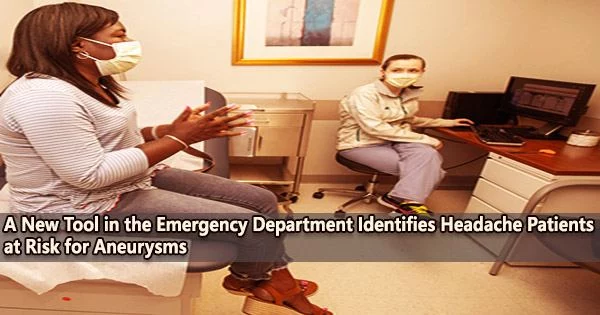According to recent research published in CMAJ (Canadian Medical Association Journal), emergency departments will be able to identify high-risk patients, improve survival rates, and reduce the use of unneeded imaging with the use of a novel tool to detect potentially fatal aneurysms in patients with headaches who appear otherwise healthy.
A bleeding brain aneurysm referred to medically as a subarachnoid hemorrhage, can cause a sudden headache.
“Although rare, accounting for only 1%-3% of headaches, these brain aneurysms are deadly,” says Dr. Jeffrey Perry, an emergency physician with The Ottawa Hospital and the University of Ottawa, Ottawa, Ontario.
“Almost half of all patients with this condition die and about 2/5 of survivors have permanent neurological deficits. Patients diagnosed when they are alert and with only a headache have much better outcomes, but can be challenging to diagnose as they often look relatively well.”
Before any clinical decision rule can be used safely, it must be validated in new patients to ensure that the derived ‘rule’ did not come to be by chance and that it is truly safe. This is especially true with a potentially life-threatening condition such as subarachnoid hemorrhage.
Dr. Jeffrey Perry
Researchers at The Ottawa Hospital, who previously produced The Ottawa Rules, a set of decision-making guidelines for identifying ankle, knee, and spine fractures, developed The Ottawa Subarachnoid Hemorrhage Rule.
The Ottawa Subarachnoid Hemorrhage Rule was first proposed by earlier published research that involved 1153 alert adult patients with acute sudden onset headaches who were hospitalized to 6 university-affiliated hospitals in Canada over a 4-year period from January 2010 to 2014.
“Before any clinical decision rule can be used safely, it must be validated in new patients to ensure that the derived ‘rule’ did not come to be by chance and that it is truly safe,” says Dr. Perry. “This is especially true with a potentially life-threatening condition such as subarachnoid hemorrhage.”
Emergency physicians now have a trustworthy method to identify high-risk patients and rule out the condition in low-risk patients without having to order time-consuming imaging thanks to the newly verified criteria.
“We hope this tool will be widely adopted in emergency departments to identify patients at high risk of aneurysm while cutting wait times and avoiding unnecessary testing for low-risk patients,” says Dr. Perry. “We estimate that this rule could save 25 lives in Ontario each year.”





